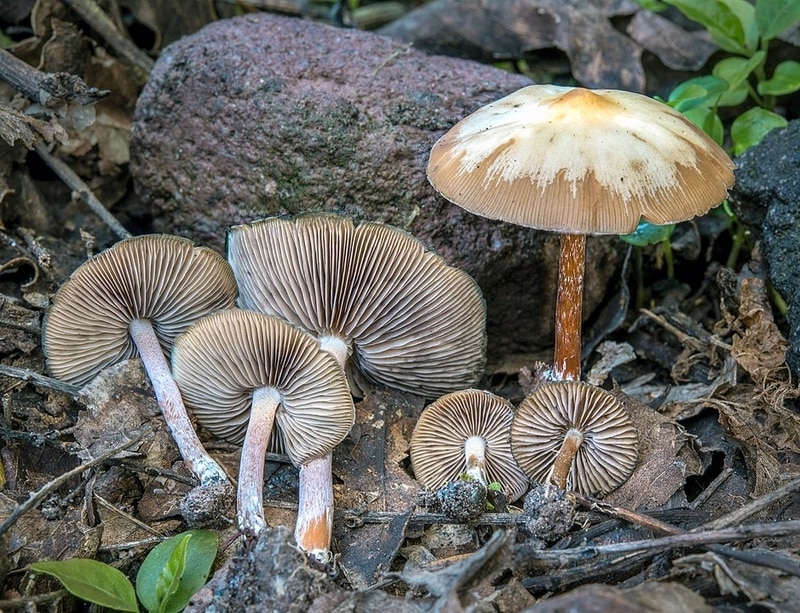
Psilocybe caerulescens Magic Mushrooms
Psilocybe caerulescens: Background
Psilocybe caerulescens magic mushrooms were first described in 1923 by Murrill but are one of the species likely used by the Aztecs, and are currently used by Mazatec shamans for the entheogenic properties. The taste and smell have been described as similar to flour and to a lesser degree, cucumber.
Psilocybe caerulescens: Habitat
Psilocybe caerulescens magic mushrooms grow gregariously, in turfs, or more rarely solitary on, preferably, muddy orangish brown soils with plentiful wood debris and no herbaceous plants during the months of June through October. It has been reported in Alabama, South Carolina, and Georgia, though distribution extends southward.
Psilocybe caerulescens: Taxonomy/Naming
Genera
Psilocybe
Species Name
caerulescens
Sub Species
caerulescens
Common Name
Landslide mushroom ("derrumbe" in Spanish).
Psilocybe caerulescens: Physical Description
Pileas
The cap has great variation in colour and shape, but is usually convex to bell-shaped with an incurved edge when young and often has a central bump (umbo). Colour ranges from reddish-brown to yellowish-brown and a silvery-blue metallic luster is often present. Easily bruises blue.
Gills
Gills are usually broadly attached to the stem and closely spaced. They are yellowish-grey when young and become a dark purple-brown to sepia upon maturity.
Spore Print
Dark purple-brown
Spores
Dark purple-brown
Stipe
The stem varies in colour from white to reddish-brown to blackish. Somewhat flexible, hollow, and cylindrical with slight swelling at the base. Mycelial cords are sometimes attached to the base and the stem can be covered in a fine white powder or wooly tufts. The veil is well developed but lacks a permanent annulus.

Comments